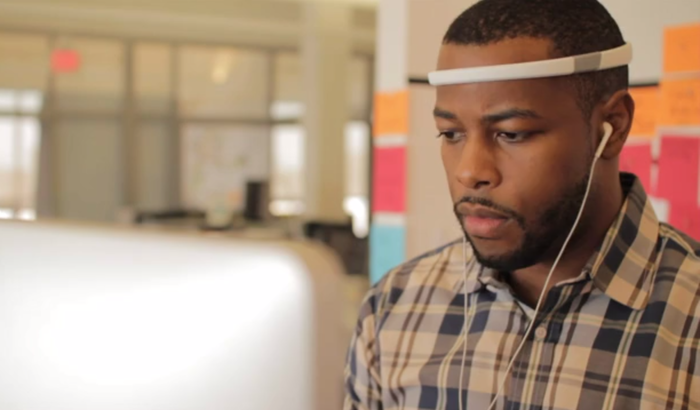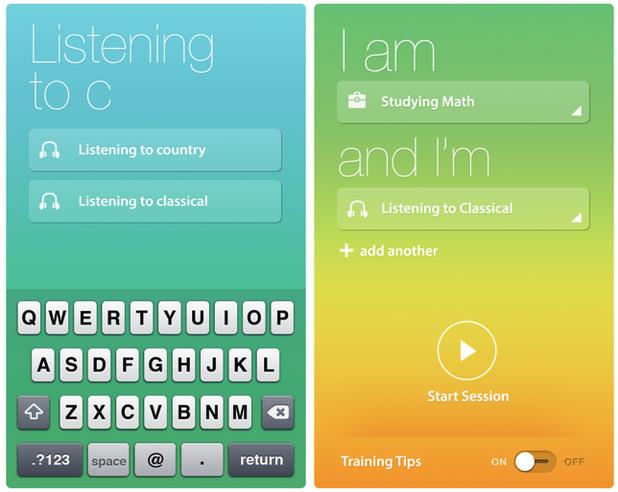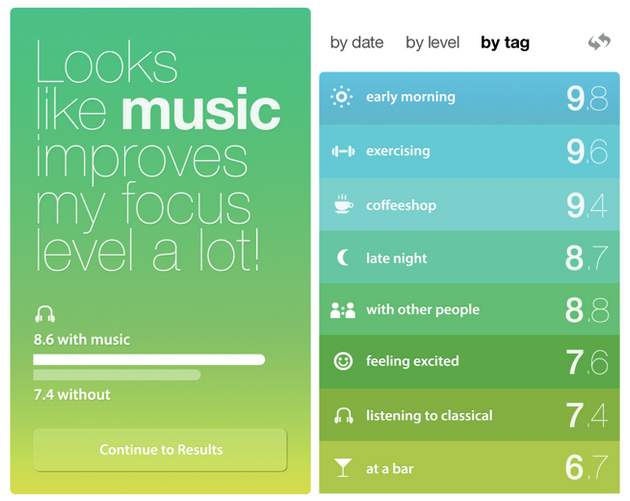
We’ve all been pulled in different directions, whether it’s work, running errands, keeping up with friends, or anything else. For some, trying to maintain an iota of productivity can be extremely difficult with our brains constantly trying to contemplate doing a dozen things all at once.
Just how do we find ourselves focusing? Some might find their focal nirvana when they’re reading a book, golfing, painting, meditating, at a Starbucks, coding, listening to music, or just watching cartoons. But what if there was a way for you to find out specifically what causes you to regain your focus so that you can repeat it over and over again?
Enter Melon
No, we’re not talking about the fruit that you would get in a grocery store. Melon is a headband worn to measure your brainwaves while you’re performing an activity.
This lifestyle-inspired headband is newest entry into the ‘quantified self’ sector. Its creators say that by wearing it while working, studying, playing sports, painting, or doing yoga, it will help you “see and understand the invisible activity of your brain”.
Just like the Nike+ FuelBand, Jawbone UP, and Fitbit devices all track and record your exercise activity, Melon looks to transform the way we focus on things.
We had an opportunity to speak with Melon’s co-founder Arye Barnehama recently and found out what’s going on with the company.
The company was founded in Cambridge, Massachusetts and created by Barnehama and Laura Michelle Berman. In May, it launched a Kickstarter campaign to help raise the funds needed to mass produce the headbands. It was looking to raise $100,000, but within 30 days, the project had been pledged $290,941 from 2,723 backers.
Melon was so popular amongst its backers that it received 50 percent of its funding all within its first day. The company estimates that when ready for market, the device will cost $99.
The device was created through an experience Barnehama had when he was in college studying cognitive and computer science. During a summer research program, he happened to be working in a lab and saw an experiment whereby brain imaging and the power of the mind was being studied in real-time. It was here where he saw kids with Attention Deficit Disorder and ADHD and that their neural feedback was being used to train their brains.
So why a headband? It turns out that it just fit the model of similar devices that measured electroencephalography (EEG). However, rather than just copying the status quo, Melon went and made some adjustments so that it was more flexible for everyday use, no matter whether you’re cleaning the house, doing yoga, studying, or anything else.
The first version of the Melon headband was hand-sewn and eventually 3D printing and other craftwork was used to get the device to where it is today.
Barnehama thought that this concept of measuring brain activity could be used in everyday life and to help accelerate the quantified self movement. But rather than just focusing on quantifying the mind, Melon also helps you understand your brain better so that you can be more productive in your life.
Training our mind to focus
Like most quantified self devices, Melon will be accompanied by an iOS and Android app where users can track their brain activity. The headband uses electroencephalography (EEG) to measure what’s going on inside your head and offers up feedback on how performance can be improved. Recognizing that not all activities will emit the same brain waves, the app can be customized where users specify the type of activity they’re doing.
So assume that you’re studying math and that you’re listening to classical music because you think that it’s conducive to helping you focus on your task. Wearing a Melon headband, the app can show you brain activity — the more wavy the line, the less focused you are. In addition, it will also provide you with personalized tips, such as “try taking 5 deep breaths” to calm your brain down and reorient you towards your planned task.
While Melon will certainly help regain your focus on that particular task, it’s also hoping that users will find their behaviors changing to make a permanent difference. After all, it’s great to be able to focus while studying for a test, but having to redo that exercise over and over can be somewhat tedious — training your mind to just remain focused sans device is invaluable.
Where does Melon go now?
Now that Melon’s Kickstarter campaign is over, what lies ahead for the company? Barnehama says that he’s moving forward with mass producing the headbands with an initial run of 5,000 units. The 2,723 backers will receive a device sometime near the end of 2013.
While some companies may choose to launch a Kickstarter campaign to raise funds, for Melon, it was that and the hope that there would be enough demand for the company to move forward. It believes that if it was resigned to go through the traditional distribution route, Melon may never get off of the ground simply because of the length of time it takes. Now they’re excited to get the ball rolling with mass appeal and a developer community it says is eager to get started working with Melon.
The developer community
In the future, Melon will open up its platform for developers to leverage, and this is something the company is excited about. Barnehama says the possibilities are endless, ranging from luminosity-style games to mental state game training, sleep monitoring, and meditation.
Melon aims to continue to build more software later on that it feels will be meaningful and contain strong insightfulness to help encourage people to improve their focus. Here’s what it offers developers:
- SDK for iOS and Android apps
- Access to focus data
- Access to raw EEG data
- List of algorithms for different mental states like meditation and sleeping
- Connection to and control over other Bluetooth devices
- Instructions for hacking into Melon
- Documentation on how to construct external hardware devices that could work with Melon
We did inquire about whether thought-controlled computing would be possible through the Melon headband, though. After all, the device is monitoring our brainwaves so, through the use of Bluetooth, why wouldn’t we be able to use our mind to “telepathically” tell our Xbox One or Apple TV or our device to change the channel, watch a movie, or listen to a song? Barnehama says it’s not far-fetched, but right now Melon is just about analyzing brain activity.
Interestingly enough, as Pebble was a backer of the product, we may also see Melon support coming to the smartwatch in the near future.
Photo credits: Thinkstock, Melon
Get the TNW newsletter
Get the most important tech news in your inbox each week.







